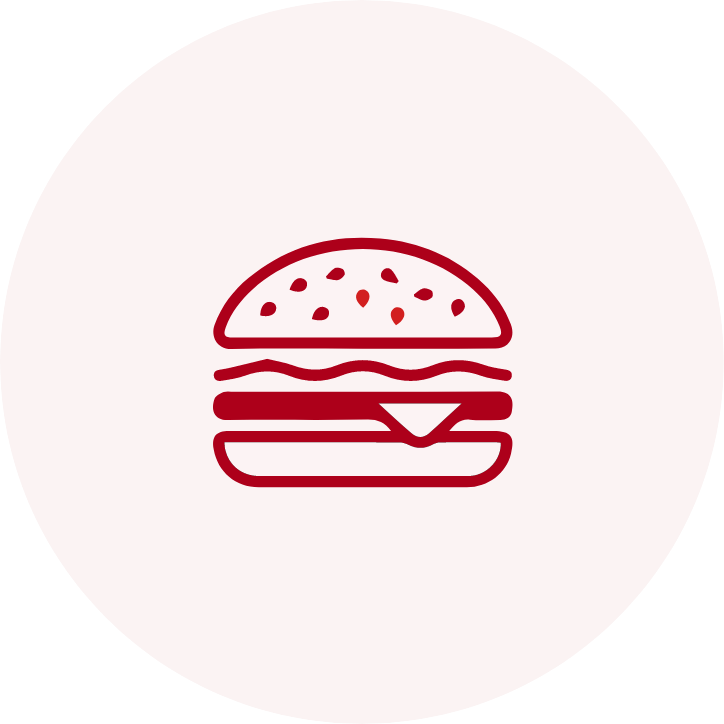Picture yourself at a store with a cart full of groceries at the end of a long day. You find two checkout lines: one with several shoppers waiting on a disgruntled cashier and another moving swiftly thanks to an efficient cashier with a smile on their face. Which do you choose?
We make decisions like this all the time to improve our experience in various situations, so why do so many business owners overlook the candidate experience? It’s sometimes difficult to put yourself in the shoes of your ideal applicant, but this guide will provide perspective and help you create a world-class candidate experience for hourly employees. You can even check out our free e-book on attracting hourly workers to solve your sourcing problems!
What Is the Candidate Experience, and Why Is It Important?
The candidate experience refers to how people feel as they go through each step of the hiring process, including:
- Visiting your careers page
- Reading the job description
- Filling out an application
- Submitting a resume
- Waiting to hear from the hiring manager
- Having an interview
- Waiting to hear from the hiring manager (again)
- Receiving an offer letter or rejection letter
Each step presents employers with an opportunity to delight or disappoint candidates, which is why it’s important to avoid common pitfalls in creating a positive experience. You can significantly reduce your chances of finding good applicants by having a poor process in place. Hourly job seekers expect a simple, mobile-friendly process to join your team. If your candidate experience is frustrating and time-consuming, they will look elsewhere for opportunities.
Candidate Experience Statistics
Here are just a few stats to further demonstrate the importance of the candidate experience, according to LinkedIn:
- 74% of candidates enjoy the chance to display their knowledge and skills during the hiring process.
- 48% of candidates like to get information about interviews ahead of time.
- 49% of new hires get a call from a manager before their start date.
- 52% of candidates who received feedback were more likely to continue a relationship with the business.
- Only 7% of candidates get a phone call from someone at the company about a rejection.
Those two final statistics are especially important for those of you who would like to increase your applicant flow. You can always use tools like Sprockets to re-engage past applicants for new positions even if they weren’t a good fit in the past for where they initially applied. So, be sure to maintain consistent communication and a positive relationship with all candidates, including those you decide not to hire. They might be an excellent hire in the near future!
How to Streamline the Hiring Process
Luckily, there are some simple ways you can improve your hiring process if it’s currently not up to par. The work you invest into transforming the candidate experience will pay dividends in the quality of applicants you attract and hire. These are great places to start:
- Re-evaluate your recruiting strategies, including which job boards you use, the audience you’re targeting to find your ideal candidates, and programs with incentives for current employees to refer friends.
- Optimize your job descriptions to stand out in a sea of listings, making sure you keep it between 100 to 300 words and mention the salary.
- Make the application process mobile-friendly, especially if you want to appeal to Millennials and Gen Zers.
- Reach out to applicants quickly and maintain communication so that they know you value their time and they don’t get tempted to accept an offer from a competitor who contacted them first.
- Use screening tools that are proven to work while contributing to a positive candidate experience, like the Sprockets hiring platform.
- Be intentional with your interview questions to gain valuable insights without wasting anyone’s time. Ideally, ask open-ended questions that inspire applicants to recall specific situations at previous places of work and reveal soft skills.
Mobile Recruiting for the Hourly Workforce
We use our phones for everything nowadays, including job searches. In fact, 89% of job seekers consider their cell phones important tools for finding opportunities. So, it’s only natural for you to include mobile recruiting strategies in your hiring process. It increases the reach of your job listing, improves the candidate experience, and even helps promote diversity in your applicant pool. Here are a few suggestions to make your hiring process more mobile-friendly:
- Optimize your careers page with keywords and a design template that adapts to mobile devices.
- Make it simple to fill out an application online — ideally in just a few minutes.
- Rethink the relevance of resumes and cover letters since these often don’t provide significant insight into an applicant’s more important soft skills for a particular role.
- Build a social media presence that showcases your company culture and career opportunities to attract new talent.
- Allow job seekers to apply via text message for their convenience as well as yours.
- Conduct virtual interviews to engage with candidates who would otherwise not be able to fit an in-person interview into their schedule, especially hourly workers who have shifts that make them inconvenient.
Best Practices for Job Offers and Rejections
It’s important to practice good communication with candidates, whether you decide to hire them or not. (As mentioned before, they might be the perfect fit for a different role or a future opening.) You want to set a positive tone from the start with your offer letter, and you should avoid burning any bridges with a bad rejection letter — or by not sending one at all.
What to include in offer letters:
- Name of Your Company
- Name of the Employee
- Position/Title
- Name/Position of Supervisor
- Schedule
- Start Date
- Compensation
- Non-Exempt Classification and Implications
- Duties
- Policies
- At-Will Employment
- Contingencies
Tips for rejection letters:
- Respond in a timely manner.
- Be professional and respectful.
- Make it concise and straightforward.
- Thank the candidate for applying.
- Let them know you’ll be in touch for openings they’d be a better fit for.
Find free templates for offer and rejections letters here.
Common Mistakes That Hurt the Candidate Experience and How to Fix Them
It’s easy to make mistakes along the way, even if you follow the suggestions we’ve outlined above. These common errors can be severely detrimental to the candidate experience you try to create. Make sure you sidestep these pitfalls as you work toward your goal:
- Poor online presence: Regularly post on social media platforms that your ideal applicants frequently visit.
- Weak job postings: Keep them clear and concise while including your company’s mission, core values, and culture.
- Inefficient interview process: Avoid asking questions that can be answered by looking at a resume or via a quick LinkedIn search.
- Lack of communication: Set clear expectations, establish a specific timeline, and maintain communication throughout the entire process.
- Boring offer letter: Emphasize the most important, positive aspects of your business and how excited you are to have the candidate join your team.
Free Resources to Enhance Your Hiring Process
Learn how to attract, hire, and retain the right workers for your business by leveraging the mental makeup of your best employees.
This free guide outlines simple steps to reduce costly employee turnover and save thousands of dollars annually.
Learn how to attract, hire, and retain the right workers for your business by leveraging the mental makeup of your best employees.
Learn proven strategies for attracting and retaining high-quality employees for your business. It’s easier than you might think!
Access this free guide to build better teams and stabilize staffing levels.
Access this free e-book to discover proven strategies for retaining your best workers and even predicting which applicants are most likely to stay long-term.
Discover how to overcome the roadblocks preventing your restaurants from being successful in the new year.
Learn simple strategies to consistently hire and retain top performers while avoiding roadblocks like costly turnover.
Personality tests, like Sprockets’ Applicant Matching System, combine natural language and artificial intelligence to predict an applicant’s likelihood of success at a particular location.






































